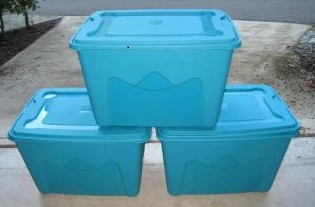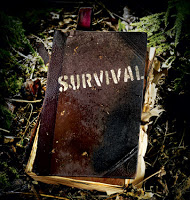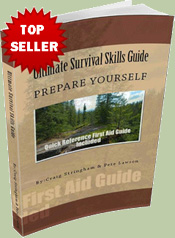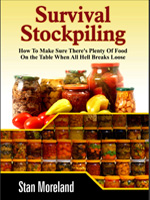Gaye Levy, Contributing Writer
Activist Post
The holidays are upon us but, alas, the task of successfully preparing our homes and families for an emergency is ongoing and does not end just because the calendar indicates a special day is coming up.
Today, surrounded by the warmth and cheer of the December holiday season, I present Month 3 of 12 from 12 Months of Prepping, One Month at a Time.
Let’s start with the supplies and gear.
- Canned fruits – 3 cans per person
- Any foods for special dietary needs (enough for 3 days)
- A large plastic tub or bin for storage of food and other emergency supplies
By now you should have a good supply of basic foods put away including protein items such as canned meats as well as veggies. This month we add fruits as well. Why? Well for one thing, fruits add additional nutrients, variety and interest to your meals. But perhaps equally important, fruits add a touch of sweetness to daily fare. You may not think this is important when you are in survival mode, but the sweetness provided by canned fruits can kick start sluggish and depressed appetites and bring a smile to the face of weary family members, especially children.
In addition, fruits add fiber – yes even canned fruits. It is true that in many cases, it is the fruit’s skin that contains most of its fiber content. And, since many fruits are peeled before they are canned, the fiber content may not be as great as fresh fruit. On the other hand, using peaches as an example, two canned peach halves contain 1.4 grams of fiber, versus 2.3 grams for a whole peach. Not a bad trade-off considering fresh fruit will be hard to come by in an emergency.
Do keep this in mind: pineapple and apricots do not lose of any their fiber content during the canning process.
In addition to fiber, fruits provide an extra dose of hydration through their water content. The only caveat is this: instead of purchasing fruits stored in a heavy syrup, choose products packed in their own juice or water. Or, better yet, can your own fruits when fresh fruit supplies are abundant!
One last thing before moving on: A study by the University of Illinois Department of Food Science and Human Nutrition found that some canned fruits provide as much dietary fiber and vitamins as the same corresponding fresh fruits and in some cases, even more. Specifically, here is what they said:
Dietary Fiber – Many fruits and vegetables are important sources of dietary fiber. The canning process does not affect fiber content, making them comparable to fresh and frozen varieties. In fact, the heating process appears to make the fiber more soluble and, therefore, more useful to the body.
Something often overlooked when storing foods for an emergency are those special dietary items required for infants, children, the elderly or those with allergies or intolerances. My suggestion here is again, purchase for long-term storage items that you already consume, or, if you are unfamiliar with an item, pick some up for current use and see how you like it. Find some canned and dried goods that your kids will actually eat – as is – right from the can.
Now I know that this may take some trial and error, but the moment is now, while you are not under pressure, to incorporate some new foods into the diet so that you can be sure that all members of your family will get adequate nutrition and calories when and if the time to dip into the emergency stash arrives.

Finally, keep your eye out for the post-holiday sales on storage bins. Often these bins are sold for half price or less in late December or early January. Last year, I picked up some large bins for $4.00 a piece. And this year I will buy more.
Let us move on to the activities we need to take care of during the current month.
Month 3 Tasks:
- Conduct a home fire drill.
- Locate the gas meter and water shutoff points and attach/store a wrench or shutoff tool near them. Also store special shutoff instruction, if any.
- Establish an out-of-state contact to call in case of an emergency.
- Identify a location for your storage of plastic bin or tub.
Fire Drills are Not Just for Kids
Do you remember the fire drills you used to have in school? Well if you are like me, it has been years (if ever) since you conducted a fire drill in your home. Think about this: it is 2 AM and your smoke detector goes off. Do you know what to do? Experts say that you have one to two minutes to get out of the house to safety. Could you and all of your family do that? And what if there is smoke? Most deaths in fires aren’t from the flames, but from smoke inhalation.
I think you get the point. Plan an escape route now. Be sure to take into account second-story bedrooms, and, if necessary, purchase an emergency escape ladder. Consider various scenarios and the the obstacles you will face in getting out of harm’s way. Plan now, then practice. Your life and the life of your loved ones may depend upon it.
Utility Precautions and Safety in an Emergency
When disaster strikes, it often affects one or more of the utilities in your home, condo or apartment. It is important to know where the main controls are located, and when and how to turn them off.
Electricity
- Locate your main electrical switch or fuse panel, and learn how to turn off the electrical power system.
- If a generator is used as a backup power supply, remember to follow the manufacturer’s instructions. Connect lights and appliances directly to the generator and not to the electrical system.
Water
- Turn off water at the main meter or at the water main leading into the house. This will prevent contaminated water from entering your water heater and plumbing.
- Turn off the valve — turn to the right. This will require a special valve wrench, available from a hardware store. Make sure you have the tool readily available.
Sewer system
- Make sure your sewer system is functioning properly before using it. This will prevent the contamination of your home, and possibly the drinking water supply.
Gas meter
- Locate your gas meter and valve.
- Have a wrench immediately available for turning off the gas supply.
- If you smell natural or propane gas, evacuate immediately and leave the area. Go to where you no longer smell gas. Do not use matches, lighters or open flame appliances. Do not operate electrical switches because sparks could ignite gas causing an explosion.
- Shut off gas only if you smell gas or hear a hissing noise. Contact the gas company to turn the gas back on.
Who to Call When the Big One Hits
Here in Washington State, we have winter storms, we have floods, and every once in awhile we have earthquakes. No matter where you live, there is a likelihood – eventually – that some sort of disaster will strike. When that happens, who will you contact? Think about that now and establish an emergency contact list so that you have names, phone numbers and email or text addresses ready to go. Keep this information accessible in an easy to remember location not only for your own use but also for any responders that may need to contact family members with regard to your well being.
Whereas there is no guarantee your home will be left standing, a good place to store this information is taped inside a kitchen cupboard or hallway closet door. Remember those utilities? Another good spot is next to your water or other utility shut-off since that is one location that is likely to be checked by emergency workers.
Storage and a Bit of Redundancy
The final task for this month is to find someplace accessible to store your bins filled with food and supplies. The key word is accessible. It will do you no good if your emergency bins are located buried under a pile of junk in the garage. Best to clean out a section of the garage or other storage area now and keep it tidy. Having stackable bins will help.
Another good idea is to identify more than one storage area so that you can split your stuff up. This follows the same theory as packing two suitcases when traveling. If one gets lost, you still have another one to fall back on. Sounds simple enough, but you would be surprised at how few people think about setting up this type of redundancy.
The Final Word
There is a lot to do in month 3, especially when it comes to safety. Still, none of the tasks are difficult — the hardest part is setting aside time to get them done. Any way you cut it, there are 31 days in the month. Break down the list, keep it simple, and begin today.
In case you missed them:
Gaye Levy, the SurvivalWoman, grew up and attended school in the Greater Seattle area. After spending many years as an executive in the software industry, she started a specialized accounting practice offering contract CFO work to emerging high tech and service industries. She has now abandoned city life and moved to a serenely beautiful rural area on an island in NW Washington State. She lives and teaches the principles of a sustainable, self-reliant and stylish lifestyle through emergency preparation and disaster planning through her website at BackdoorSurvival.com. SurvivalWoman speaks her mind and delivers her message with optimism and grace, regardless of mayhem swirling around us. Enjoy your next adventure through common sense and thoughtful preparation!
linkwithin_text=’Related Articles:’






Be the first to comment on "Getting Prepared Month 3: Special Foods, Fire Drills and Home Safety"